Baby’s First Year: Month 6
- August 29, 2021
- by Melissa Lawrence
Hello, moms and dads, and welcome to Month 6 with your baby and Month 6 with my baby, Bracey. Bracey is now 25 weeks old, but only 15 weeks old in terms of his gestational age, so in terms of milestones he’s closer to a 4-month-old baby than a 6-month-old.
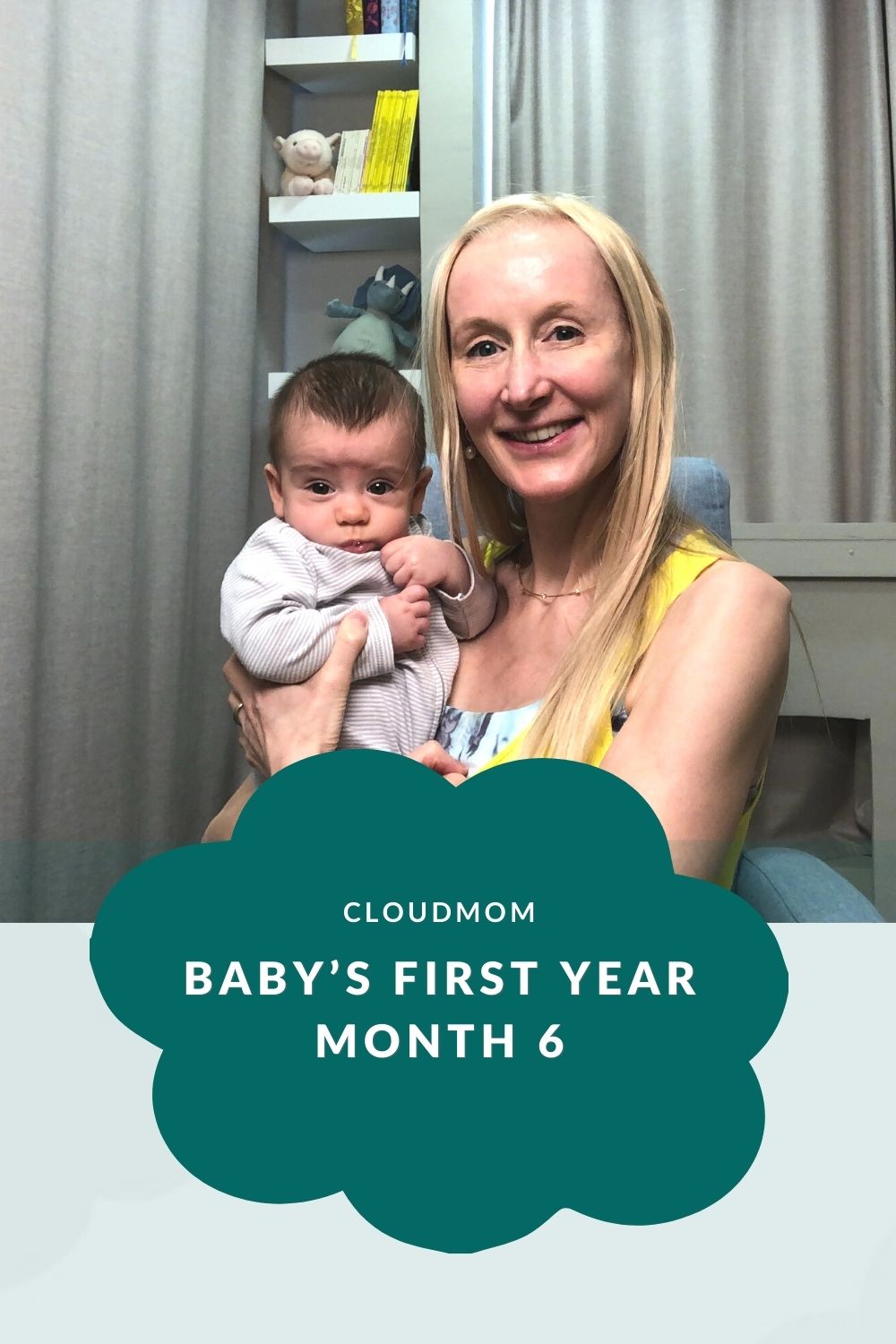
Growth and Development of a 6 Month Old Baby
Growth of a 26 Week Old Baby
During the first six months of life, babies grow at a rate of 5-7 ounces (140-200 grams) per week and ½ to 1 inches (or 1.5 to 2.5 centimeters) per month. So figure that by about 26 weeks old, your baby has likely gained approximately 8.125-11.4 pounds from birth (3.6-5.2 kilos) and grown about 3.25-6.5 inches or 39-65 centimeters. At his 6 month checkup, Bracey weighed 5.3 kilos (11.7 pounds), up from 1.490 kilos at birth, so he gained 3.8 kilos or 8.3 pounds. He’s at the lower end of the range for weight gain, but well within it so my pediatrician was pleased.
Baby’s 6 Month Checkup with the Pediatrician
Your baby will see the pediatrician for a 6 month old checkup. At this appointment, your doctor will measure your baby’s length and the circumference of their head, weigh your baby, check your baby’s responsiveness, and assess the strength of your baby’s back, neck, and head control by sitting them up.
Vaccinations given at 6 Month Pediatrician Appointment
For questions about the recommended vaccine schedule for babies, consult the CDC’s chart. At their 6 month appointment, your baby will be receiving their third dose of: the DTaP (Diphtheria, Tetanus and Acellular Pertussis) vaccine, the PCV13 vaccine (Pneumococcal Conjugate), the Hib (Haemophilus Influenzae Type b) vaccine. Depending on which type of RV (Rotavirus) vaccine your doctor has administered, your baby may or may not have a third dose given at 6 months. The third dose of the Hep B (Hepatitis B) vaccine and the Polio (IPV) vaccine is administered between months 6 and 24.
Should Babies Get a Flu Shot?
After 6 months, the Center for Disease Control (DCD) recommends an annual Influenza vaccine (flu shot) for babies, ideally before the month of October. Children 6 months through 8 years old should get two doses of the vaccine. If your child previously received two doses, they only need one dose in subsequent seasons.
When will Babies Teeth Come In?
At your baby’s 6 month doctor’s appointment, your doctor will look at your baby’s gums for signs of teeth coming in and will give you advice as to how to clean them. Your doctor likely will advise that you take a clean towel or gauze pad and wipe your baby’s gums and teeth after meals. Toothbrushes and toothpaste are not yet needed. While some babies get their first tooth at around 6 months, others get a tooth as early as 4 months, and others will go until 12 months or beyond before developing teeth.

2 Packs Baby Teething Toy Silicone Teething Mitten for Babies Over 3 Months Anti Dropping Wrist Hand Teethers Baby Chew Toys for Sucking Needs, BPA Free


NatureBond Baby Food Feeder/Fruit Feeder Pacifier Nibbler (2 Pack) - Infant Teething Toy Teether Weaning in Appetizing Colors | + Additional Silicone Sacs


VATOS Tummy Time Baby Water Play Mat Toys for 3 6 9 Months Newborn Infant&Toddlers, Inflatable Sensory Toys Gifts for Boy Girl| BPA Free Infant Early Development Activity Centers


iPlay, iLearn Baby Rattles, 3-6 Month Baby Toys, Infant Grab N Shake Rattle, Sensory Teether, Development Learning Music Toy, Newborn First Shower Gifts for 0 1 2 4 5 7 8 9 10 12 Month Babies Boy Girl


Baby Mirror Tummy Time Toy with Crinkle Cloth Book for Infants 0-3 Months High Contrast Newborn Sensory Toy for Baby 3-6 Months Black and White Toy for 0-6 7 9 Month for Babies 6-12 Month Shower Gifts


Yeeeasy Baby Rattle Cotton Socks and Wrist Rattle Strap Set, Infant Toys 0 3 6 9 12 Months, Baby Gifts for Boys and Girls, Develop Babies Sensory Toys


Pro Goleem Fleece Baby Booties, Warm Cozy Baby Slippers, Stay On Sock Shoes, Easy to Put on, Unisex Baby Gifts, Soft Non-Slip Adjustable Newborn Boots for Boys and Girls 3-6 Months, Pink


Hooku 2 Pack Teething Toys for Babies 0-6 Months, Silicone Teethers for Babies 6-12 Months, Remote Teether for Baby, Sensory Toys for Babies, Baby Chew Toys, Toddler Infant Newborn Baby Girl Boy Gifts


Aboosam Baby Toys 0-6 Months - Tummy Time Mirror Toys with Cloth Books & Teethers - Montessori Infant Toys for Babies 0 3 6 9 Months - High Contrast Newborn Sensory Toy for Boys Girls Baby Gift


Aboosam Tummy Time Baby Mirror Toys 0-6 6-12 Months High Contrast Infant Toys Brain Development with Crinkle Cloth Book and Teether - Montessori Newborn Sensory Toys for Babies Boys Girls Gifts
Developmental Milestones for a 6 Month Old Baby
Baby’s Neck, Back, Chest, and Leg Strength at 6 Months
By 6 months, many babies are holding their head up securely and able to turn their head left to right securely without wobbling. Many babies can stand with support. During Tummy Time, most babies can push up to their elbows and lift their head up high and some are beginning to crawl.


When Should my Baby Crawl?
Although babies vary greatly in this regard, the average start date for babies to start crawling is between 6 and 7 months. You’ll notice your baby start to pull in his knees and lift up his torso. Some babies will do a belly-down army crawl, others will shuffle. Some babies will never crawl and will go right to cruising, pulling up and walking. If you’re asking yourself how to help your baby crawl, keep in mind that the more time your baby spends in Tummy Time, the earlier he will crawl.
Baby’s Vision and Coordination at 6 Months
By 6 months, many babies will hold their hands together, bring things to their mouth, play at holding their own bottle (they might be able to hold the bottle for a few seconds on their own), and play with their toes (inconvenient during diaper changes). Most babies will turn over from stomach to back and others will also be able to flip from back to stomach. Some babies can pass objects from one hand to another.
How much does a 6 Month Old Baby Hear and Talk?
Your 6 month old will continue babbling and making sounds, and will increasingly throw in consonants. Your baby might talk back to you more than before. It seems as if Bracey is trying to say “hi.” I see him opening his mouth and uttering “ah, ah.” By 6 months, most babies will follow sounds with their eyes, laugh, and babble when they get very excited or while playing with you. In his bouncy seat last week, Bracey bounced up and down to the music.
How do I play with my 6 Month Old Baby?
Putting on music and dancing with your baby while holding him or encouraging him to move while on his back or in his bouncy seat is a fun activity. Keep talking to, reading to, hugging, kissing and interacting with your baby. For strength, try gentle baby sit ups. Tummy Time several times a day remains a must. Other fun activities include: peek-a boo, kicking, clapping, and Superman-type flying (make sure you have a tight hold on your little superhero).
How to Introduce Solid Foods
The introduction of solid foods is one of those super scary things like breastfeeding and potty training that expectant and new parents tend to find very stressful. I know I did. Going through this now for the sixth time, and being in Spain, I don’t follow the rules as closely as a first-time parent might. For example, at Bracey’s 6 month checkup, Bracey’s doctor recommended the that I start the following diet: first feed: breastmilk; second feed, breastmilk followed by 5 ounces (150 ml) of pureed chicken, green beans, zucchini and carrot; third feed, breastmilk followed by a mixture of ¼ pear, ¼ banana and ¼ apple pureed fresh; fourth feed, breastmilk followed by breastmilk mixed with corn or rice cereal. This is what I did and it worked like a gem. They was no talk about food allergies, one food at a time, none of that. None of my other children have suffered from any food allergies so I just went for it.
You might want to proceed with more caution, introducing one type of vegetable or fruit at a time for a few days to ensure your baby does not have a negative reaction, before then mixing these together and eventually adding steamed and pureed meats like chicken. Within a few months you can give courser more lumpier food and more diverse mixtures.
When it comes to preparing baby food, do what’s easiest for you. If you’re busy you might have to opt for store-bought baby foods. Try to buy organic and as fresh as you can. But don’t sweat it. At this point, babies nutrition still is principally coming from breastmilk or formula and solids are by and large for practice.
My biggest tip when it comes to solids is to always give the milk first. Your baby will be calmer because they won’t be starving and this entails a more relaxed feeding experience. And that way you ensure that baby is getting the quantity of breastmilk or formula they need.


Fisher-Price Portable Baby Chair Sit-Me-Up Floor Seat With Developmental Toys & Machine Washable Seat Pad, Pacific Pebble


Fisher-Price Portable Baby Chair, Deluxe Sit-Me-Up Floor Seat with Removable Toys and Snack Tray, Happy Hills


Summer Infant Deluxe SuperSeat®, Wild Safari, Fun Baby Seat for Sitting Up, Playtime, and Meals, Ages 4 Months to 4 Years, Includes Booster Seat, Tray, and Toy bar


Bright Starts Pink Paradise Portable Baby Bouncer with Vibrating Infant Seat and -Toy Bar, Max Weight 20 lbs., Age 0-6 Months


Infantino Music & Lights 3-in-1 Discovery Seat and Booster - Convertible, Infant Activity and Feeding Seat with Electronic Piano for Sensory Exploration, for Babies and Toddlers, Teal


Skip Hop Baby Ergonomic Activity Floor Seat for Upright Sitting, Silver Lining Cloud, Gray


Upseat Baby Floor Seat Booster Chair for Sitting Up with Removable Tray for Meals and Playtime, Developed with Physical Therapists for Safe and Healthy Hip Development and Posture


Summer Infant Learn-to-Sit 2-Position Floor Seat (Heather Gray) – Sit Baby Up in This Adjustable Baby Activity Seat Appropriate for Ages 4-12 Months – Includes Toys, Funfetti Neutral


Fisher-Price Baby Bath Tub for Newborn to Toddler with Baby Seat & Bath Toys, 4-in-1 Sling 'n Seat, Summer Blossoms


Fisher-Price Baby Portable Chair Deluxe Kick & Play Sit-Me-Up Floor Seat with Piano Learning Toy & Snack Tray for Infants to Toddlers
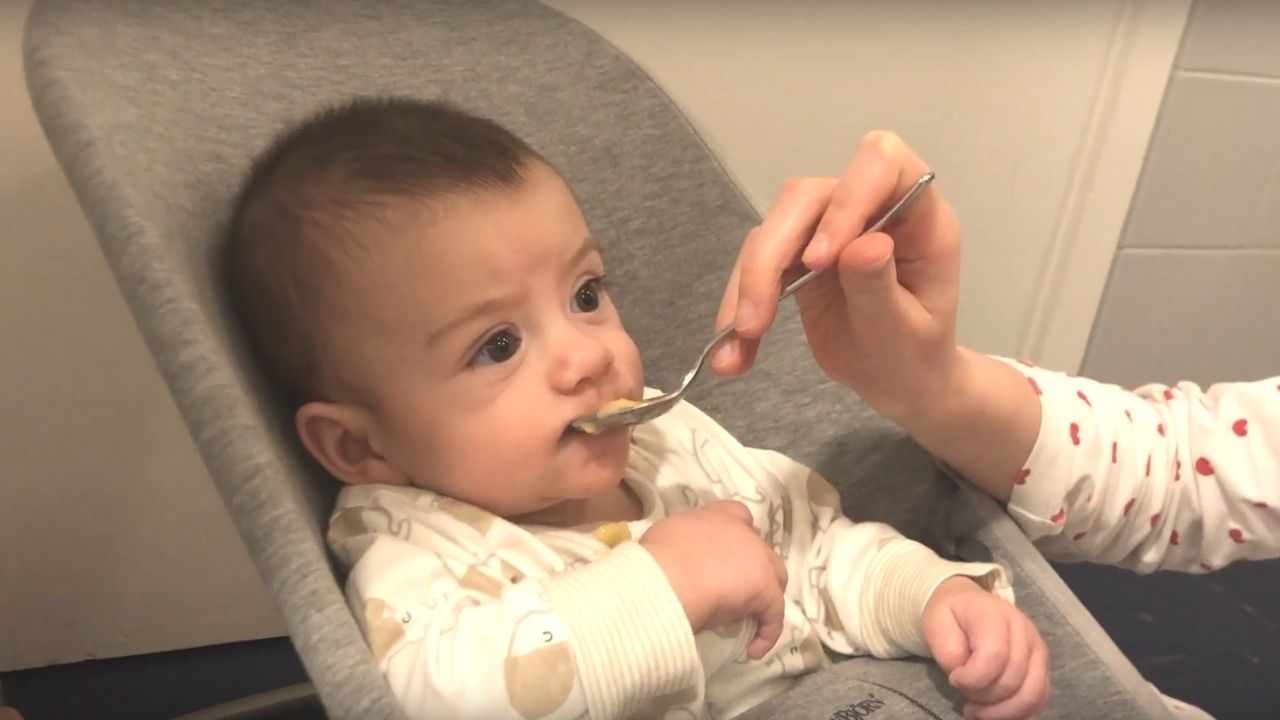

How Much Breastmilk does my 6 Month Old Baby Need
Bracey’s weighs 11.8 pounds. According to the formula I provided during Month 4, I multiply that by 16 to get his weight in ounces and I divide by 6 to see how much breastmilk he needs per 24 hours (29.3 ounces). When I divide that by 5, I get 6.2 ounces (188ml). If you are feeding directly from the breast, you might not know exactly how much your baby is eating, but this is helpful in case you are supplementing breastfeeding from the breast with bottles. Keep in mind that since you are introducing solids at 6 months, the amounts of breastmilk your baby drinks will decline a bit.
At Month 6, you are introducing solid foods so those need to become a part of your daily schedule. Here’s the schedule that is working nicely for me. I am giving more foods and more mixtures as I described above. I’ve adjusted the amounts below to comply with American guidelines.
- 7am — sleep 9:30-11am.
- 11am – breast then 2-3 tablespoons of single food vegetable puree. Sleep 1:30-3pm.
- 3pm — breast then 2-3 tablespoons of single food fruit puree. Sleep 6-7pm.
- 7pm — breast then 2-3 tablespoons of corn or rice cereal mixed with breastmilk. Sleep 8:30-11pm.
- 11pm — sleep at 11:30pm. This can be called the “top off” feed.
From the get-go, Bracey wanted more food than this.
Bottle Feeding a 6 Month Old Baby
As is the case with breastmilk, at 6 months, the amount of formula your baby consumes likely might begin to decline based on the introduction of solid foods. As stated, though, for the first 12 months, breastmilk or formula remains the cornerstone to baby’s nutrition and you want to make sure your baby consumes enough.
Formula Feeding, First Foods and Sleeping Schedule for a 6 Month Old Baby
- 7am bottle — sleep 9:30-11am.
- 11am bottle followed by 2-3 tablespoons of single food vegetable puree. Sleep 1:30-3pm.
- 3pm bottle followed by 2-3 tablespoons of single food fruit puree. Sleep 6-7pm.
- 7pm bottle followed by 2-3 tablespoons of rice or corn cereal mixed with formula. Sleep 8pm.
- 11pm – right back to sleep
Over time your baby will drop the 11pm feeding, as well.
Bracey Update
At his 6 month appointment, Bracey weighed 3.2 kilos (11.8 pounds). Although this weight gain was slightly less than the month prior, Bracey’s doctor was happy. He’s cheeks are rosy and he’s taking good naps in the crib. At night, he has dropped the nighttime feed and sleeps from around 11pm to 8-9am. Lucky me, right. We’ve been at it for six months now so I was ready for the full-night’s sleep.


Bracey continues to light up our life, literally. We have so much chatting, babbling and laughing with him. His older siblings have been helping him do sit ups to gain strength and continue to help me with diaper changes, bottles, and even changes of clothes. I can count on Marielle to pick out a fun outfit.
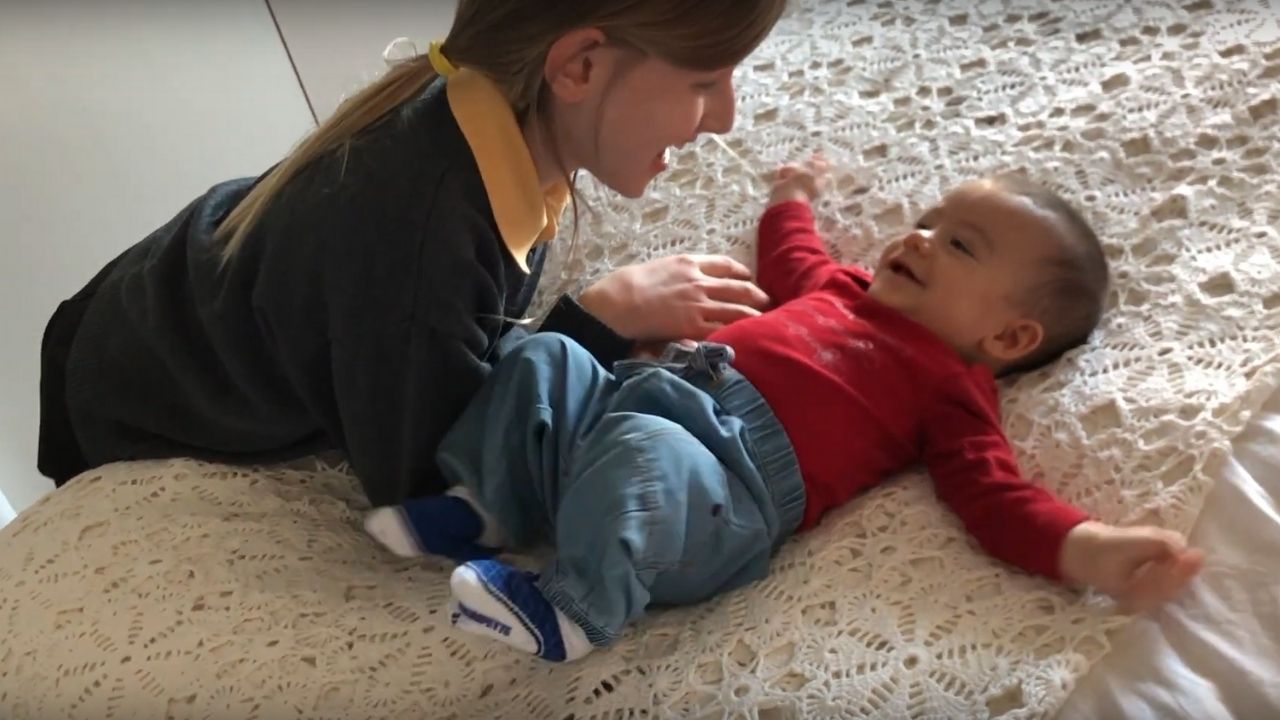

Resources
VeryWellFamily
WebMD
Parents.com
Whattoexpect.com
Kidshealth.org





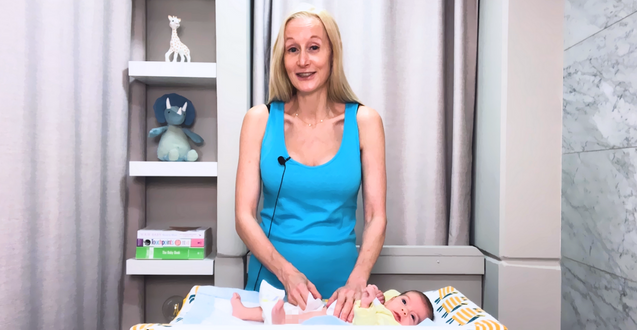
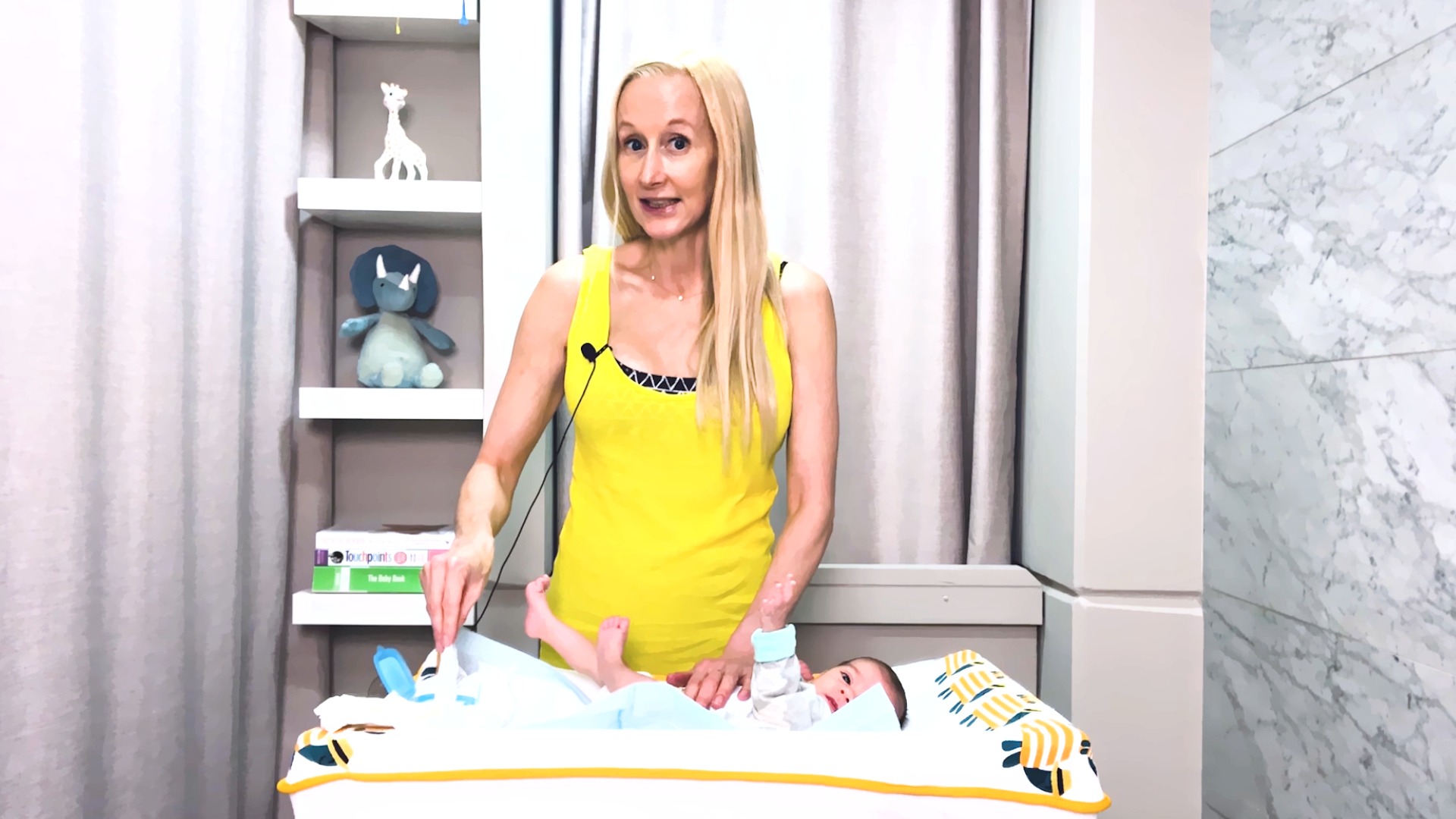
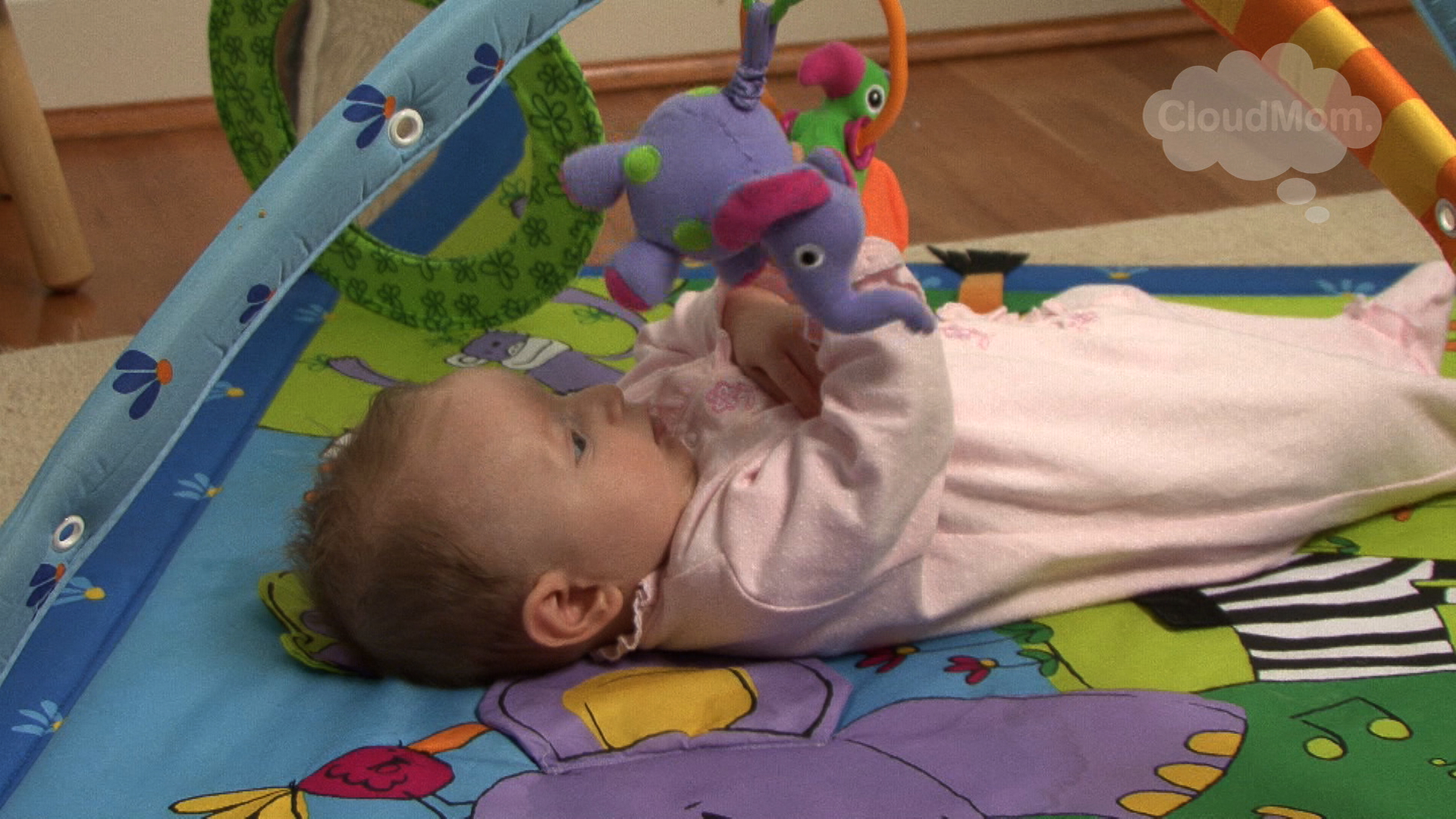

Comments